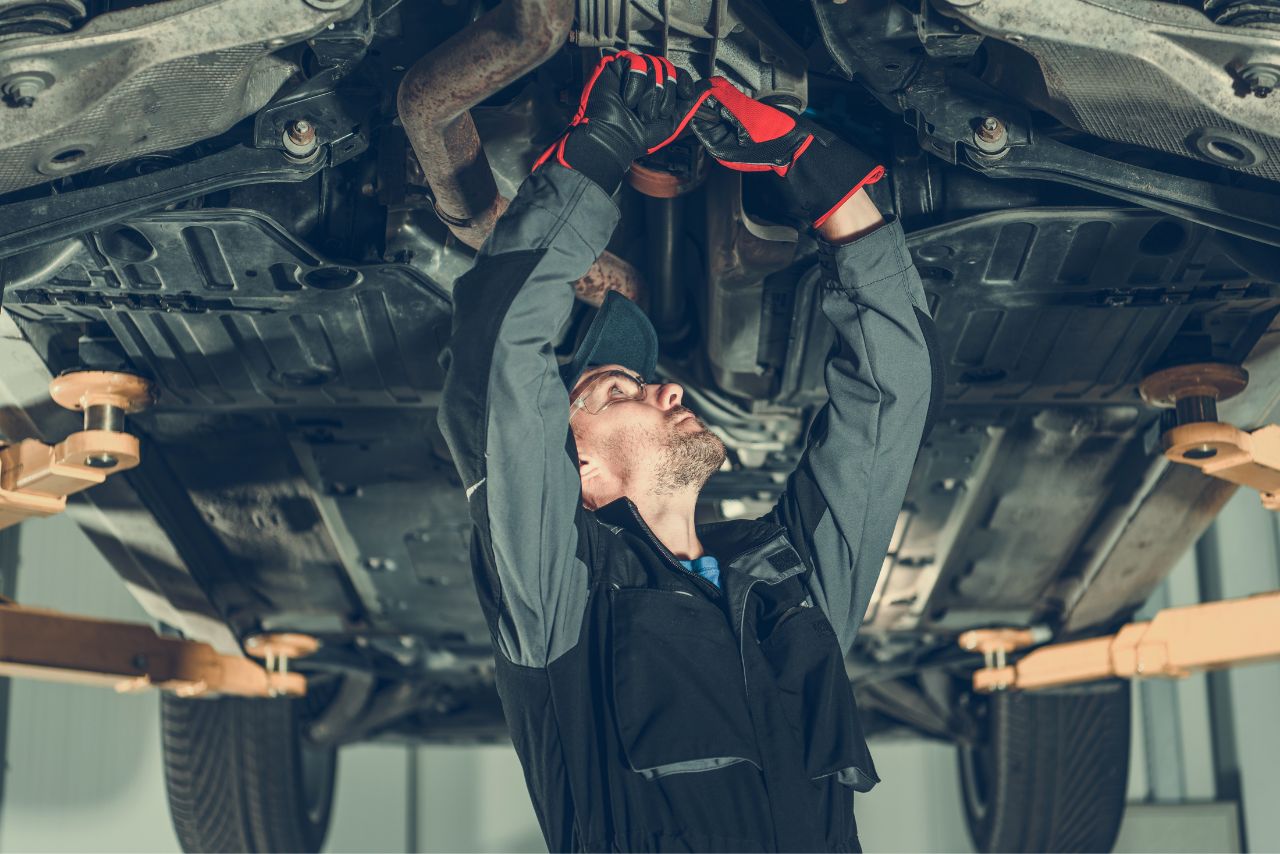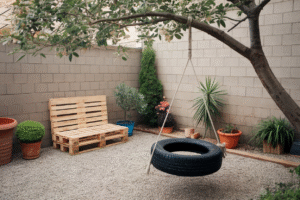Car Undercarriage Cleaning is an important part of regular vehicle maintenance that often gets overlooked.
But How to Clean Undercarriage of Car & Truck? In this article, we will guide you through the step-by-step process of washing the undercarriage to ensure your car stays clean and rust-free.
Your car’s undercarriage gets dirty and grimy from driving on roads, especially in winter. To clean it, you can use a pressure washer, a brush, and a degreaser. Spray the undercarriage with the pressure washer, then scrub it with the brush and degreaser. Rinse it off with the pressure washer again.
So, if you’ve been wondering about how to properly clean the underside of your vehicle, keep reading for all the tips and tricks you need to know.
Cleaning the truck undercarriage not only helps maintain your car’s appearance but also extends its lifespan by preventing rust and corrosion caused by road salt, dirt, and debris.
By following our simple instructions on how to wash the undercarriage of a car, you can keep your vehicle in top shape and protect it from potential damage down the line.
Table of contents
Why Washing the Undercarriage is Important?

Washing the undercarriage of your car or truck is an essential part of proper car maintenance. Here’s why it’s important:
Prevents rust and corrosion:
The undercarriage of a car is constantly exposed to various elements like dirt, salt, and moisture.
Over time, these substances can cause rust and corrosion on vital components such as the frame, exhaust system, and suspension parts.
Regularly washing the undercarriage helps remove these corrosive agents and prevents damage.
Extends the lifespan of your vehicle:
By keeping the undercarriage clean, you significantly increase the lifespan of your vehicle.
Rust and corrosion can weaken structural integrity over time, leading to expensive repairs or even safety hazards. Proper maintenance ensures that crucial parts stay in good condition for longer.
Protects against road salt damage:
If you live in an area where road salts are used during winter months to melt ice and snow, washing the undercarriage becomes even more critical. Road salts are highly corrosive and can speed up rusting if left unchecked.
Cleaning off salt residue from underneath your car helps prevent long-term damage caused by this chemical agent.
Improves overall performance:
A clean undercarriage allows air flow around components such as brakes, exhaust systems, and engines better which aids in cooling them down during operation effectively contributing towards improved performance.
To properly wash the undercarriage:
Regularly including washing the undercarriage into your car care routine will go a long way toward preserving its appearance as well as maintaining optimal functionality for years to come
Preparing Your Car or Truck for Car Undercarriage Cleaning:
Before you start cleaning the undercarriage of your car, it’s important to properly prepare your vehicle. Here are some steps to follow:
Gather the Necessary Tools and Materials:
- Choose a suitable location: Find an area with good drainage and enough space to maneuver around your car comfortably.
- Elevate the car (if required): If you have enough clearance, you can skip this step. However, if access to certain areas is limited, using jack stands can make the job easier.
- Protect sensitive components: Cover any electrical connections, exposed wires, air intakes, or other delicate parts that could be damaged by water or cleaning products.
- Remove loose debris: Before starting the actual cleaning process, remove any loose dirt, mud, leaves, or other debris from the undercarriage using a high-pressure stream of water.
- Apply degreaser or shampoo: Dilute your chosen car shampoo or degreaser as per its instructions and apply it generously on all surfaces of the undercarriage that need cleaning.
- Scrub stubborn stains: Use a wheel brush or soft bristle brush to scrub away any stubborn stains caused by oil spills, road grime, rust buildup etc.
- Rinse thoroughly: Rinse off all surfaces of the undercarriage using a pressure washer or strong stream of water from a garden hose until no traces of soap suds remain.
- Dry properly: Pat dry any excess moisture using microfiber towels or allow sufficient time for natural drying before driving.
Remember that the undercarriage is prone to rust and corrosion, so it’s crucial to perform regular cleaning and maintenance.
By preparing your car properly before cleaning, you can ensure a more effective and safe undercarriage cleaning process.
Tools and Materials You’ll Need:
To effectively wash the undercarriage of your car, you’ll need a few essential tools and materials. Here’s a list of what you should gather before getting started:
Remember always follow manufacturer instructions when using these tools and materials.
Step-by-Step Guide to Wash the Undercarriage:

Washing the undercarriage of your car is an essential part of regular maintenance. Here’s a simple step-by-step guide to help you keep this area clean and protect it from rust, dirt, and debris:
Remember that regular cleaning of your car’s undercarriage is crucial for maintaining its longevity and preventing potential issues down the line.
By following these simple steps on a regular basis, you can keep your vehicle’s underside in great shape and reduce the risk of costly repairs.
Here you can watch this video guide:
Tips for Maintaining a Clean Undercarriage:
Keeping the undercarriage of your car clean is important for its overall maintenance and longevity. Here are some tips to help you maintain a clean undercarriage:
Remember that maintaining a clean undercarriage goes hand in hand with regular car washes and overall vehicle maintenance.
By following these tips, you can keep your car’s undercarriage in great shape and prolong its lifespan.
How to Clean Undercarriage of Car at Home?

Supplies Needed:
Steps:
Always use caution when cleaning under a raised vehicle to avoid injury. Make sure jack stands are rated for the vehicle weight and placed securely.
Watch this video guide for more guide:
How Much Undercarriage Rust Is Normal?

Some amount of undercarriage rust is normal on all vehicles, especially older ones. This is because the undercarriage is constantly exposed to the elements, including moisture, salt, and road debris.
However, there is a difference between normal surface rust and more serious rust that can weaken the structural integrity of the vehicle.
Here is a general guide to how much undercarriage rust is normal:
If you are unsure whether the rust on your vehicle’s undercarriage is normal, it is best to have it inspected by a qualified mechanic. They will be able to assess the severity of the rust and recommend any necessary repairs.
Factors that can affect the amount of undercarriage rust:
How to prevent undercarriage rust:
There are a few things you can do to help prevent undercarriage rust:
By following these tips, you can help to keep your vehicle’s undercarriage free of rust and extend its lifespan.
Conclusion and final thoughts 💭
Washing the undercarriage of your car is an essential part of maintaining its overall cleanliness and prolonging its lifespan.
By following the steps outlined in this article, you can ensure that dirt, debris, and corrosive substances are effectively removed from this often overlooked area.
Regularly cleaning the undercarriage not only helps to prevent rust and corrosion but also contributes to better performance and fuel efficiency.
Remember to use a high-pressure hose or pressure washer to dislodge stubborn grime and always thoroughly dry the undercarriage after washing to minimize water damage.
By incorporating undercarriage cleaning into your regular car maintenance routine, you can keep your vehicle looking great while protecting it against potential damage from road salt, mud, and other contaminants.
So don’t forget about this important step the next time you wash your car – give some attention to its underbelly for a cleaner, safer ride!




Leave a Reply